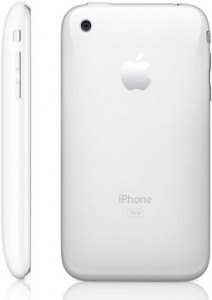Who’s Not on Board?
 Not that long ago, a major mobile phone carrier had an effective advertising campaign with a catchy slogan. Yet, I found their slogan troubling. It was troubling in that their banner, “We have fewer lost calls” left with me an impression that “we’re not as bad as the other guys” was written with the intent to establish a positive differentiator of quality and reliability. My reaction then was that the goal was to be the best of the bad, or cream of the crap. Upon reflection, I realized that the problem was with me, and in fact, the carrier’s message was the right one. This carrier was actually speaking the language of quality, not of spin (as I confess was my reaction). Quality is measured by the likelihood of failure against a specification. In their case, our case, it was a message that what mattered to the customer was continuity of service and there is a probability that that service will be interrupted, and the best do it fewer times. The carrier must have studied Dr. Noriaki Kano and realized that in some cases, the best can mean fewer defects, and failures against a basic requirement can only bring dissatisfaction. For the basic requirement of service availability, a service unavailability measure is the right metric and satisfaction is not achievable, that is, zero defects can bring only zero dissatisfaction.
Not that long ago, a major mobile phone carrier had an effective advertising campaign with a catchy slogan. Yet, I found their slogan troubling. It was troubling in that their banner, “We have fewer lost calls” left with me an impression that “we’re not as bad as the other guys” was written with the intent to establish a positive differentiator of quality and reliability. My reaction then was that the goal was to be the best of the bad, or cream of the crap. Upon reflection, I realized that the problem was with me, and in fact, the carrier’s message was the right one. This carrier was actually speaking the language of quality, not of spin (as I confess was my reaction). Quality is measured by the likelihood of failure against a specification. In their case, our case, it was a message that what mattered to the customer was continuity of service and there is a probability that that service will be interrupted, and the best do it fewer times. The carrier must have studied Dr. Noriaki Kano and realized that in some cases, the best can mean fewer defects, and failures against a basic requirement can only bring dissatisfaction. For the basic requirement of service availability, a service unavailability measure is the right metric and satisfaction is not achievable, that is, zero defects can bring only zero dissatisfaction.
This last week, we witnessed what appeared as truly bizarre behavior from Apple. The new flagship, the iPhone 4, has a troublesome performance problem with the reception. The very beautiful phone integrated the antenna into a smooth metal casing, creating a problem when the phone was held in a particular, albeit very normal, way. Some would argue that the decision process for the product launch suffered from an unhealthy bias wherein form trumped substance and engineering warnings. It’s saddening, coming from an exciting and innovative producer of form and substance. What was befuddling was the chairman’s response to the defects. It began with hubris with what appeared a dismissive tone that trivialized the problem …. Customers don’t know how to hold our phone properly, what’s all the fuss about; it’s the bad media at play. As the evidence mounted of the reception calamity and the web took over, sharing the data, the next stage of responsiveness focused on an attack on the competition, asserting that other smart phones shared the same problem. From here it sounds like it’s about “my” product and brand, not the customer pain. That strategy was a big boo-boo. Motorola, HTC, and RIM did not remain silent, each stating that their designs did obey the laws of physics and sound engineering, after all, customers wanted continuity of service.
Today’s connected world is a dangerous place to forget that respect for the customer and respect for the competition are essential for sustainability of brand value and economic goodwill, just ask Toyota. I’ve always loved Apple’s creativity in form and substance. I also believed that Toyota put the customer first. Funny how often bigger does not beget better. It’s called entropy, another engineering insight often forgotten.
On reflection, I wonder how much of the problem had to do with poor engineering and how much with a culture of “enforced optimism” or some variant of the “emperor’s new clothes?” The evidence to date on the catastrophic BP oil rig explosion and the subsequent environmental opening of Pandora’s Box seem to support the dangers of “enforced optimism” leadership behaviors.
How often does the “enforced optimism” show up in planning (pick any type), budget sessions, objectives, progress reviews and reports, investor sessions, group decision making, scheduling and commitment setting, …., other stuff?
Thoughts?


Comments are closed.